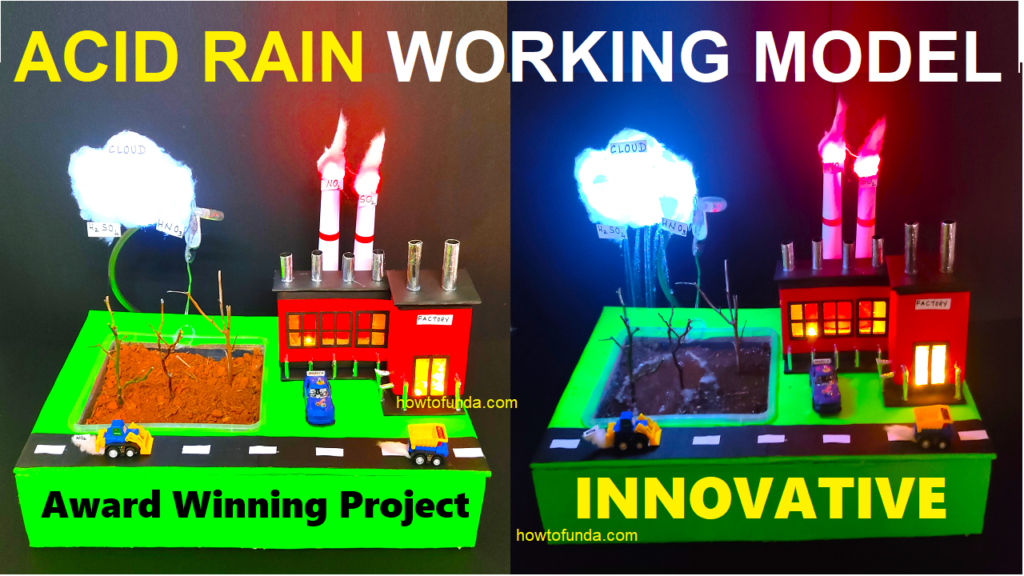Introduction:
Ladies and gentlemen, distinguished judges, and fellow students,
Today, I stand before you to shed light on a phenomenon that has silently wreaked havoc on our environment for decades – Acid Rain.

As we gather here at this science exhibition, it is my hope that we can unravel the mysteries of acid rain and recognize its grave implications for our planet.
Defining Acid Rain:
Acid rain is a complex environmental issue resulting from the release of harmful gases into our atmosphere.
These gases, primarily sulfur dioxide (SO2) and nitrogen oxides (NOx), react with atmospheric moisture to form acidic compounds, which then fall to Earth as rain, snow, fog, or dust particles.
The Invisible Culprit: Air Pollution:
The primary source of these noxious emissions is human activity.
Industrial processes, the burning of fossil fuels, and transportation are major contributors to the release of sulfur dioxide and nitrogen oxides into the air.
These pollutants are invisible, but their impact is far-reaching.
The Destructive Power of Acid Rain:
- Ecosystems: Acid rain disrupts the delicate balance of ecosystems by leaching vital nutrients from the soil, rendering it unsuitable for plant growth. This, in turn, affects the entire food chain, jeopardizing the survival of countless species.
- Forests: Our lush forests suffer from the detrimental effects of acid rain. Trees weakened by acidic soil are more susceptible to diseases and pests, leading to extensive deforestation.
- Aquatic Life: Acid rain contaminates freshwater bodies such as rivers, lakes, and ponds. It poses a dire threat to aquatic life, particularly fish and amphibians, which are highly sensitive to changes in water pH levels.
- Infrastructure: Acid rain corrodes buildings, bridges, and monuments, resulting in substantial economic costs for repairs and maintenance.
Measuring Acid Rain:
Scientists employ pH as a measure of acidity, with values below 7 indicating acidity. Natural rainwater is slightly acidic, with a pH of around 5.6. However, acid rain can have a pH as low as 4 or even lower.
Mitigating Acid Rain:
- Reducing Emissions: The first step in combatting acid rain is to reduce emissions of sulfur dioxide and nitrogen oxides through cleaner technologies and renewable energy sources.
- Environmental Restoration: Implementing strategies to restore damaged ecosystems and rejuvenate soil health is crucial.
- Education and Advocacy: Raising awareness about acid rain and its consequences can mobilize communities and policymakers to take action.
Conclusion:
In conclusion, acid rain is an environmental threat that knows no borders. It impacts our natural world, our economy, and our health.
As we gather at this science exhibition, let us remember that the power to mitigate acid rain lies in our collective efforts and informed choices.
By understanding the causes and consequences of acid rain, we can pave the way toward a cleaner, healthier, and more sustainable planet.
Let us be stewards of our environment, taking steps to reduce emissions, restore ecosystems, and preserve the beauty of our world for future generations.
Thank you.

